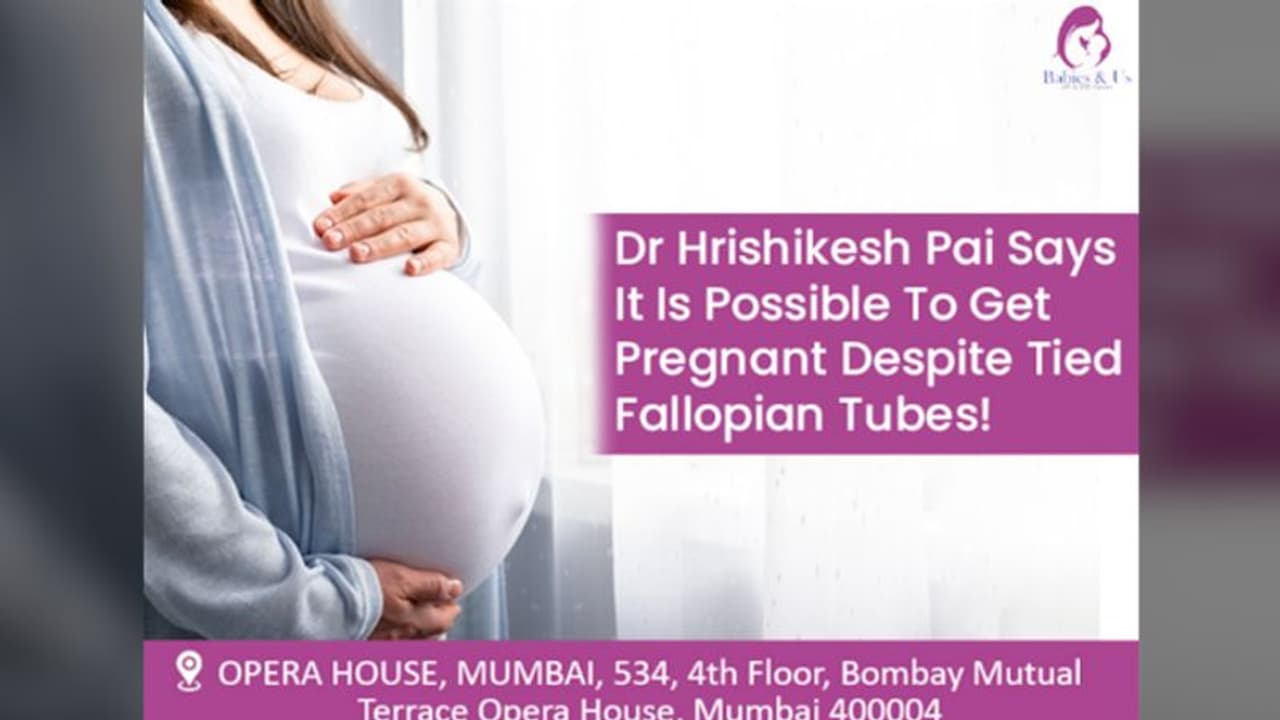Also, around 10-15% of women who have had their tubes tied desire to become pregnant again for various reasons, such as the passing of a child or marital issues, such as remarrying. Tubal ligation reversal surgery or IVF (In Vitro Fertilization is the two possible treatments.
Tubal ligation is a widely used form of contraception as it is both secure and efficient. Nonetheless, there have been many instances of women getting pregnant despite having their tubes tied. In addition, the internet is full of patient stories of delivering children despite tubal ligation.
Also, around 10-15% of women who have had their tubes tied desire to become pregnant again for various reasons, such as the passing of a child or marital issues, such as remarrying. Tubal ligation reversal surgery or IVF (In Vitro Fertilization are the two possible treatments
Dr Hrishikesh Pai, Founder of Babies & Us Clinic in South Mumbai, states, 'It is possible to get pregnant after tubal ligation. Across my years of practice, I have successfully delivered babies of such patients. But, of course, such cases require thorough diagnosis and expertise in ensuring a seamless IVF cycle".
As mentioned earlier, tubal ligation reversal surgery and IVF (In Vitro Fertilization are the two possible treatments, but both have their share of advantages and drawbacks. I mostly recommend IVF for such cases as the success rate of a reversal surgery is quite less. If patient’s condition reveals limited length of the remaining fallopian tubes, advanced age of the mother, there is thermal damage to the tubes or scarred tubal tissues then the chances of a successful reversal surgery are quite less. Also, the reproductive surgeon performing the surgery should be exceptionally experienced and skilled.
IVF is equally suitable for women with non-operational tubes, such as blocked fallopian tubes, and those who have undergone a salpingectomy (where the tubes are removed due to conditions such as hydrosalpinx, pyosalpinx, TB, or for treating an ectopic pregnancy).
Referring to the IVF treatment administered to such patients, the approach involves the administration of hormonal injections for 10 to 12 days to make the egg grow, known as controlled ovarian hyperstimulation, which is also done in IVF. A separate trigger injection is then given to make the eggs mature. Afterwards, the egg retrieval process is scheduled around 34 to 36 hours after the trigger injection.
Women's eggs are taken out of their ovaries using a slender, lengthy needle and a suction pump. This technique is pain-free as it is done under anaesthesia, known as Ovum pick-up (OPU)/Egg retrieval. On the same day as the ovum pick-up, the husband's sperm sample is gathered and the finest quality sperms are chosen from it. These eggs and sperms are then placed together in a laboratory-controlled environment at a regulated temperature, which causes fertilization, leading to the formation of embryos.
These embryos are then assessed and cultured in a lab, and their quality is evaluated. The best-quality embryos are then transferred to the female's uterus, known as embryo transfer. As everything that would have taken place in the woman's fallopian tubes occurs in the laboratory regarding IVF, there is no need for regular fallopian tubes.
Babies & Us IVF and ICSI Centre is centrally located in Mumbai to offer quality gynecological treatment including state-of-the-art fertility procedures that raise the hope of rising number of infertility people who desire to become parents at any cost.
About Babies & Us IVF and ICSI Centre
Established by Dr Hrishikesh Pai, Babies & Us IVF and ICSI Centre strive to resolve infertility issues of patients who have sought permanent birth control procedure but desire to have children. Babies & Us IVF and ICSI Centre is a Multi Speciality Clinic in Mumbai is well equipped clinic that offers state-of-the-art fertility treatment including complicated cases such as pregnancy after birth control procedures, recurring IVF failure, multiple miscarriages and so on.
Disclaimer: This is a featured content
